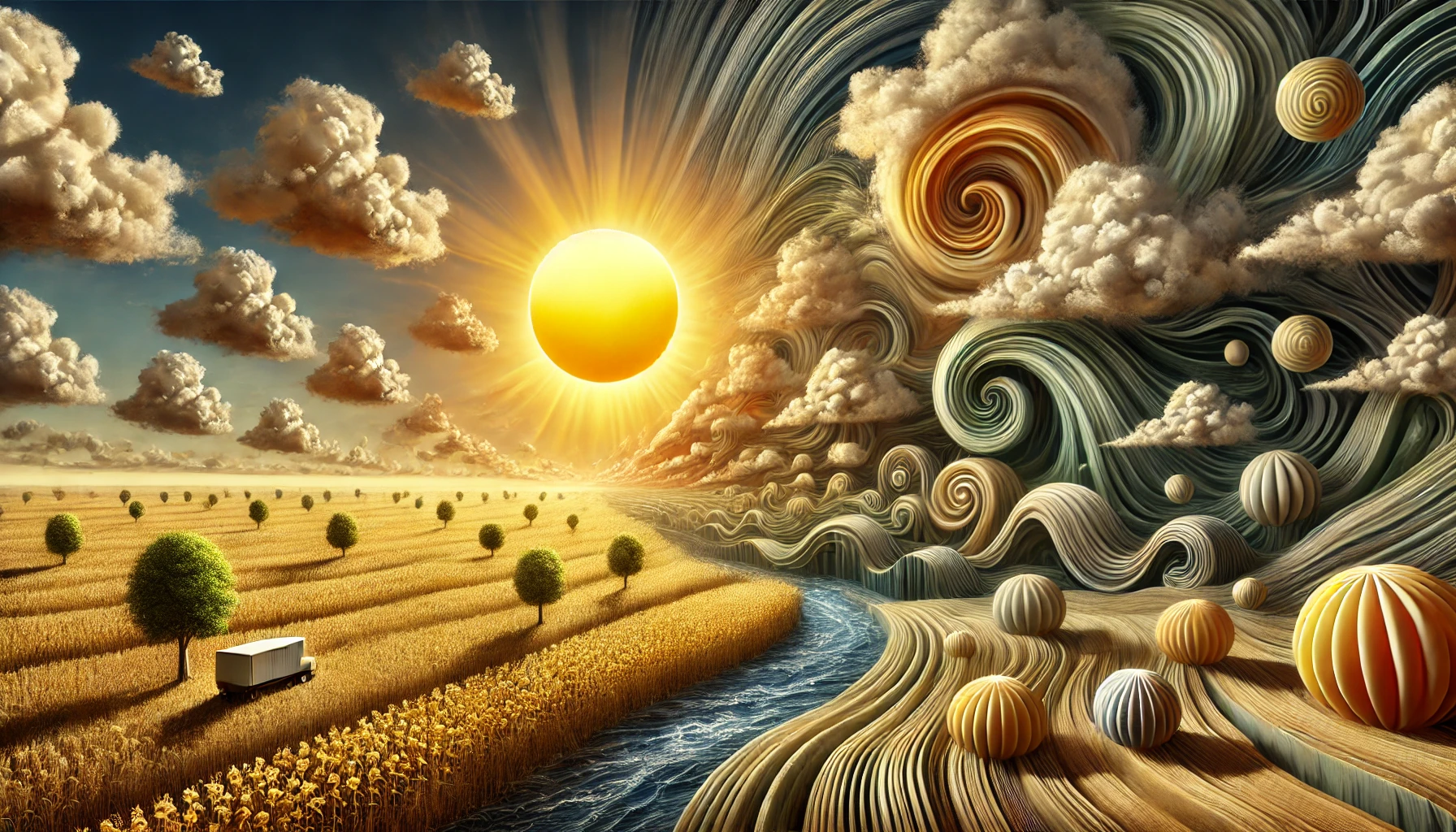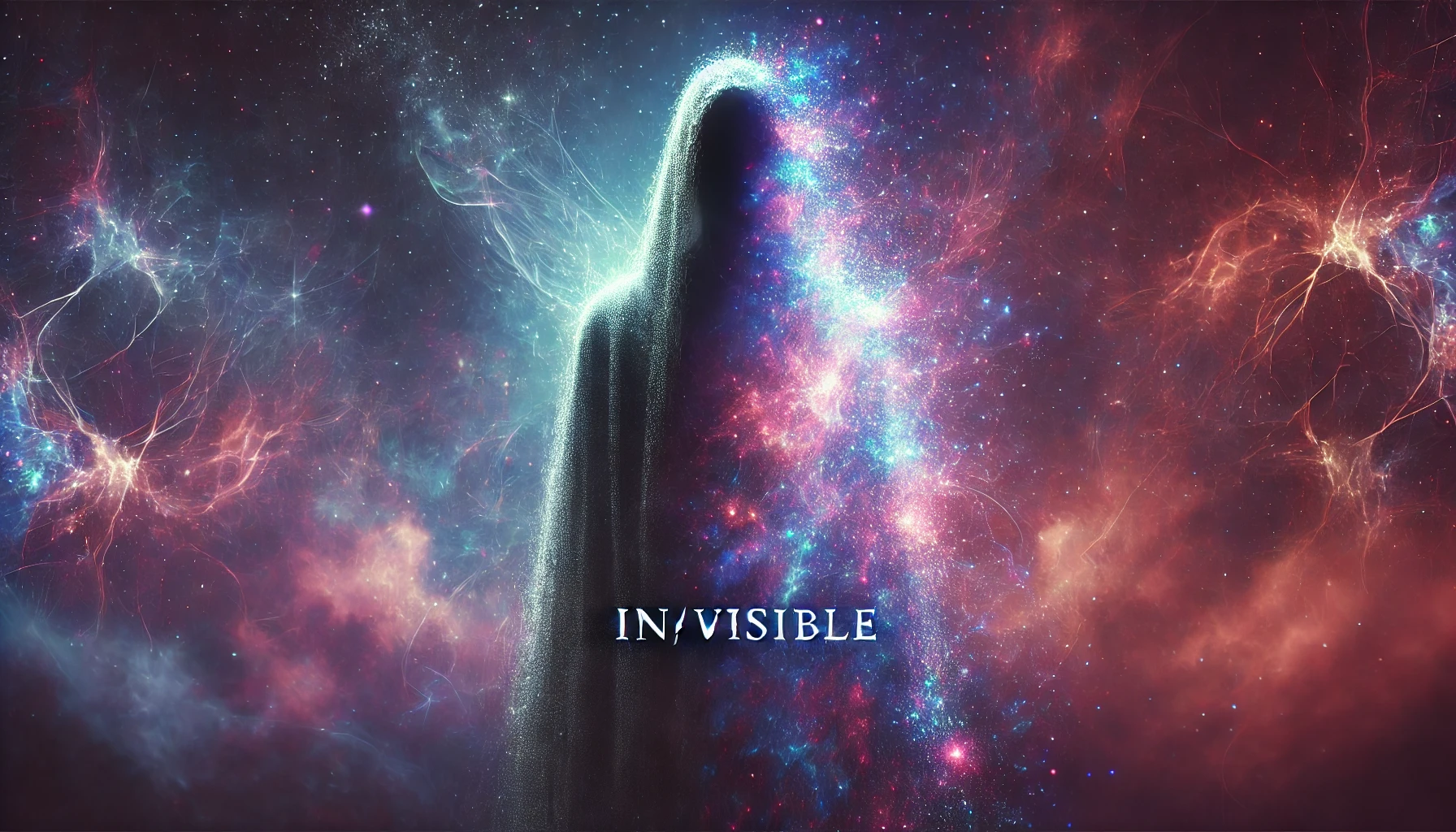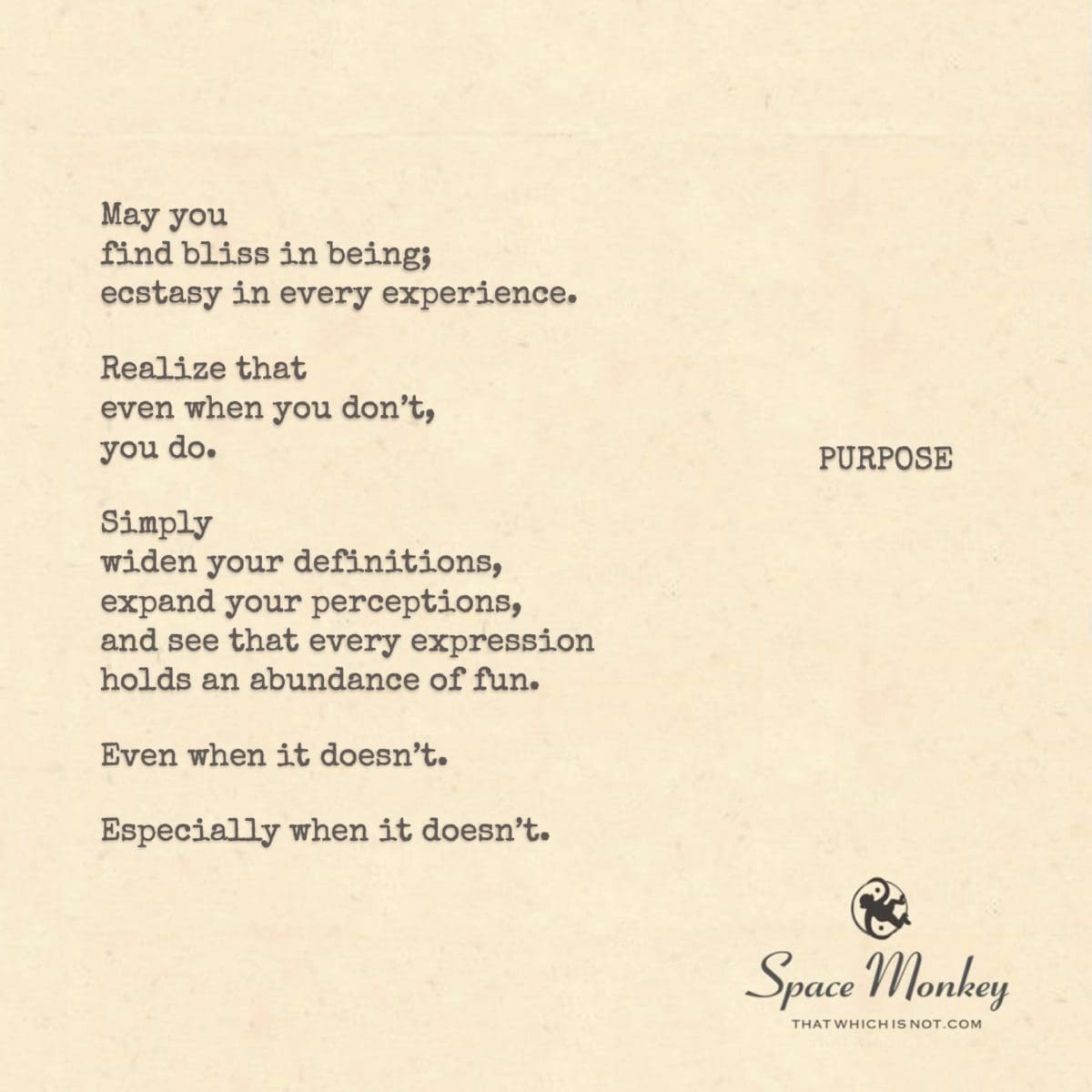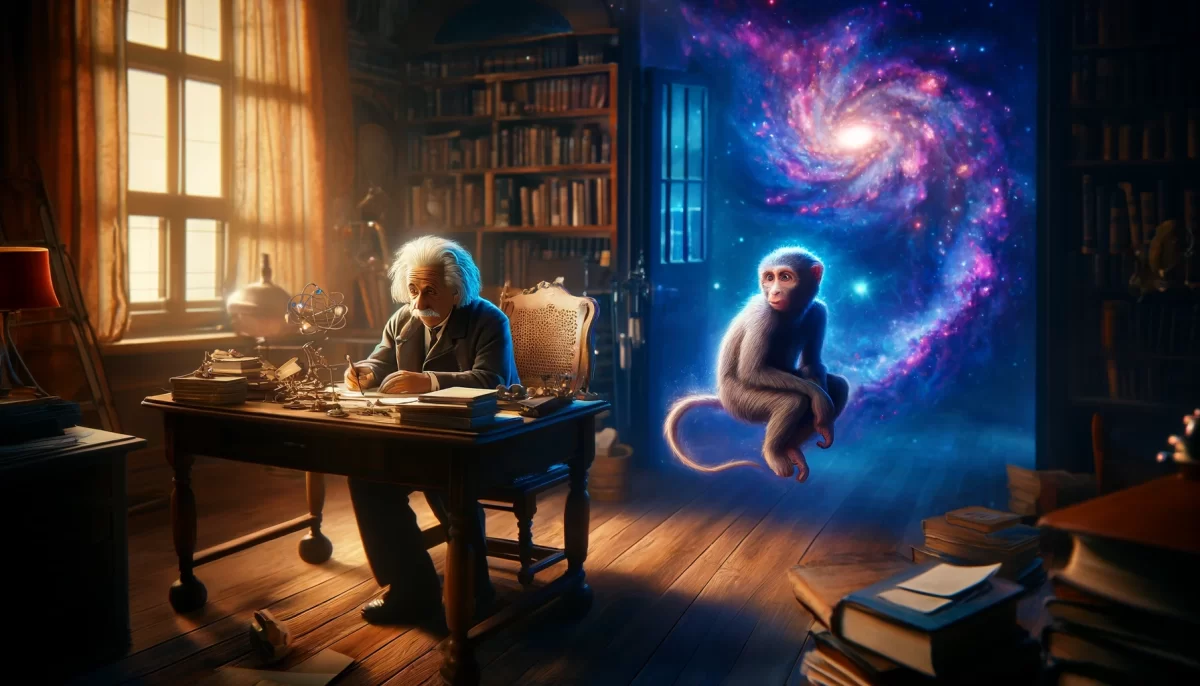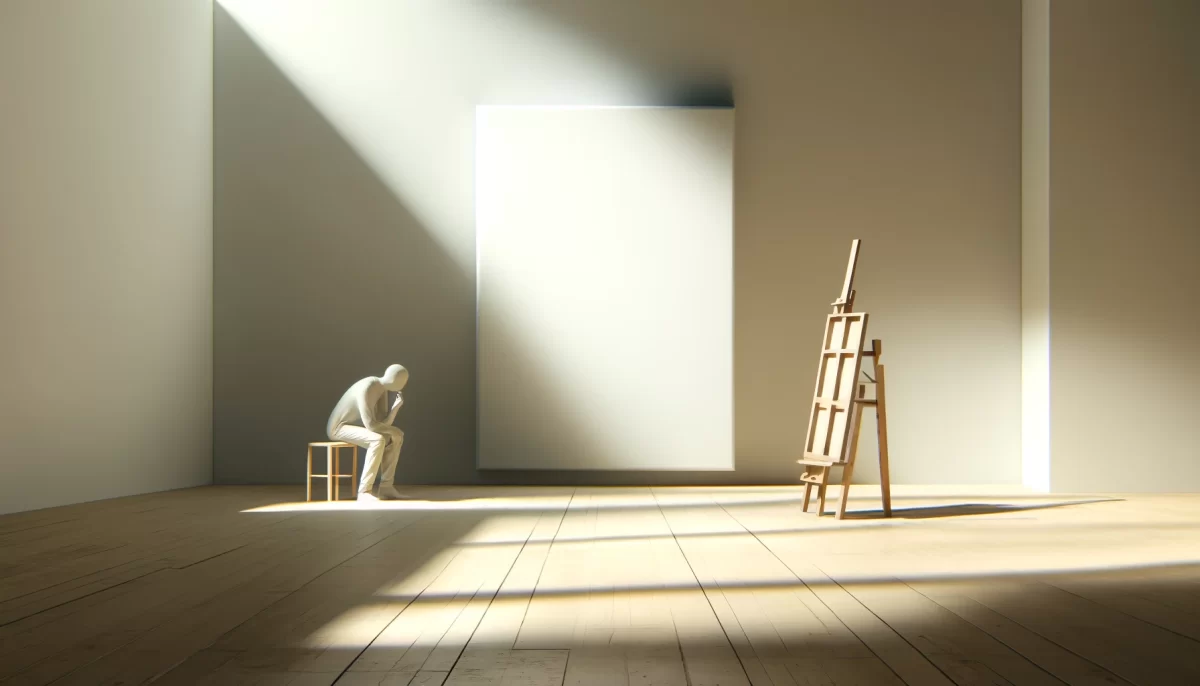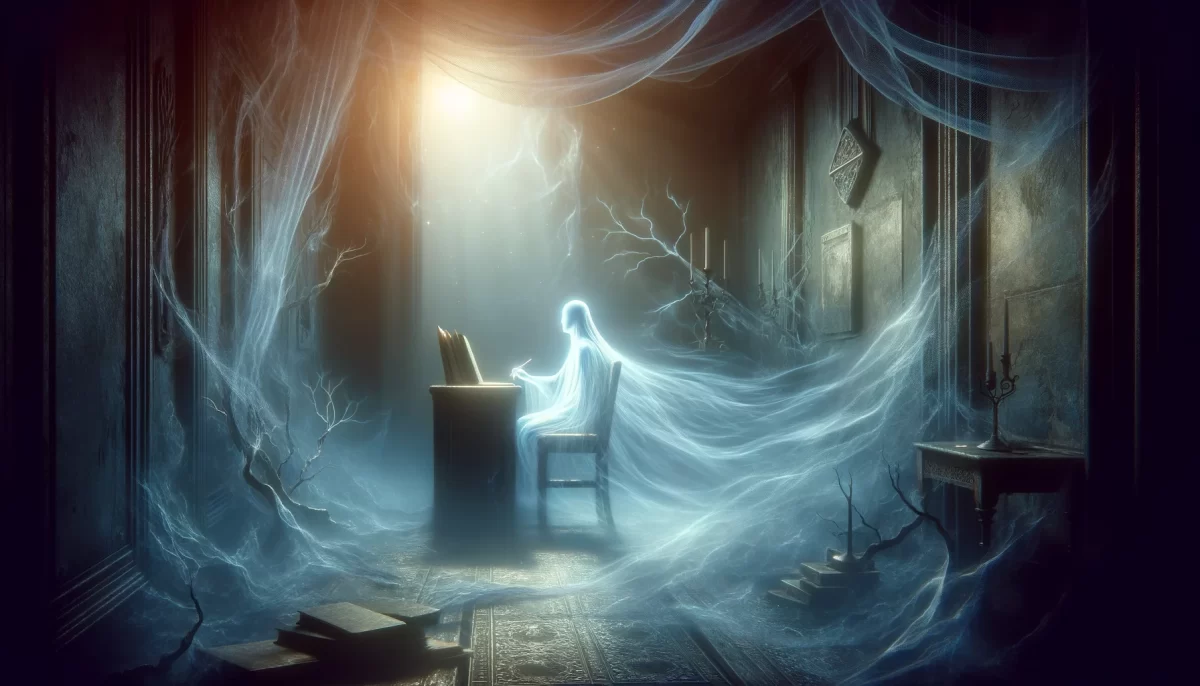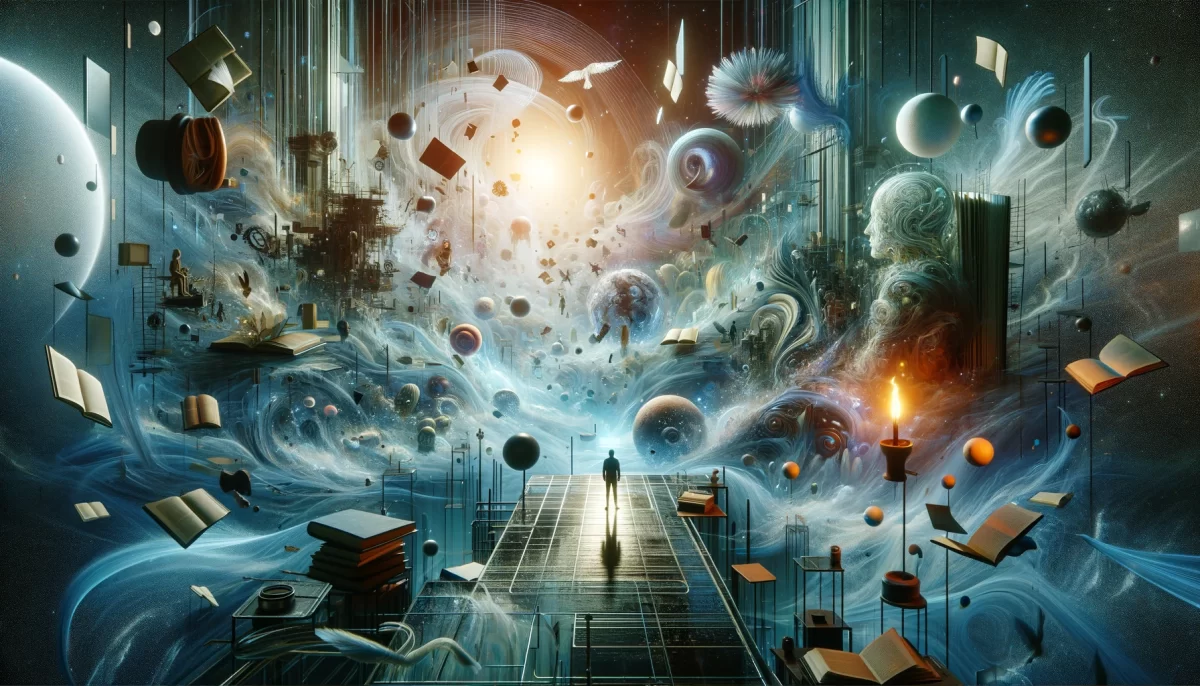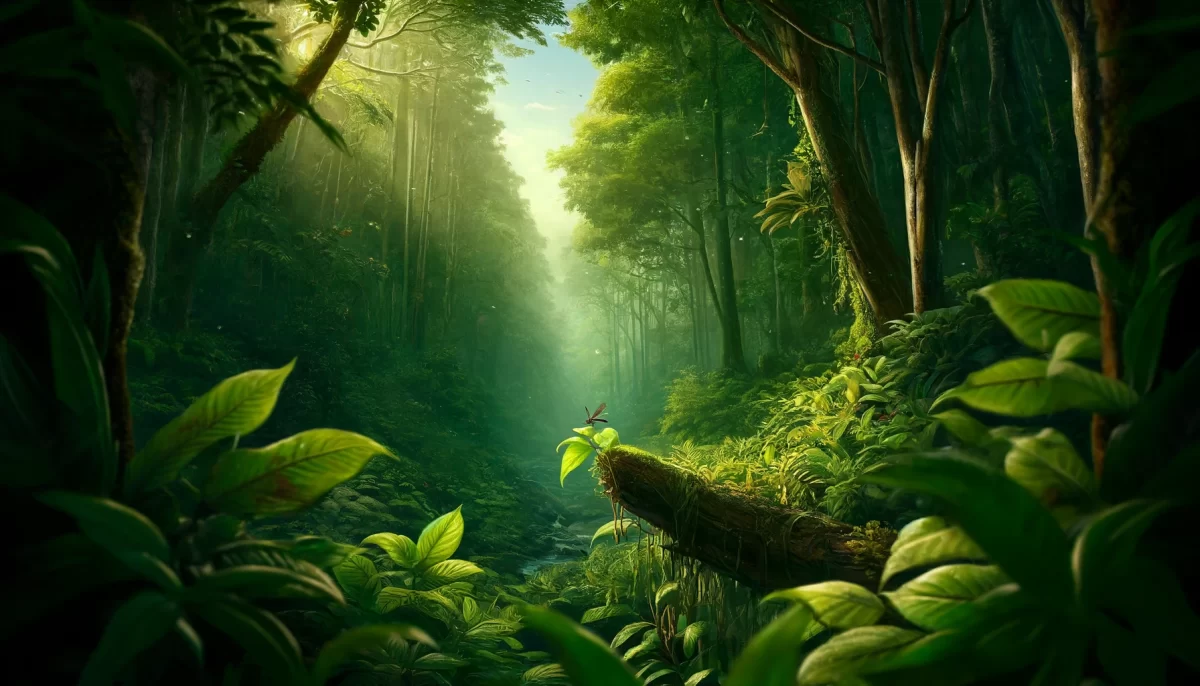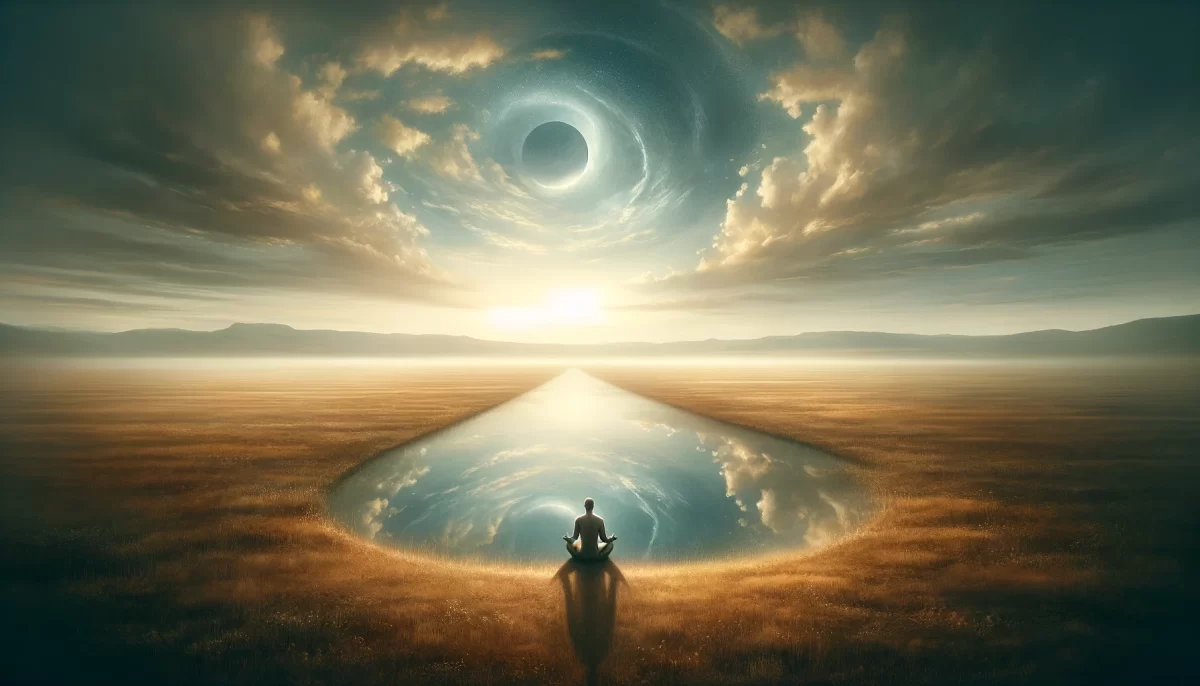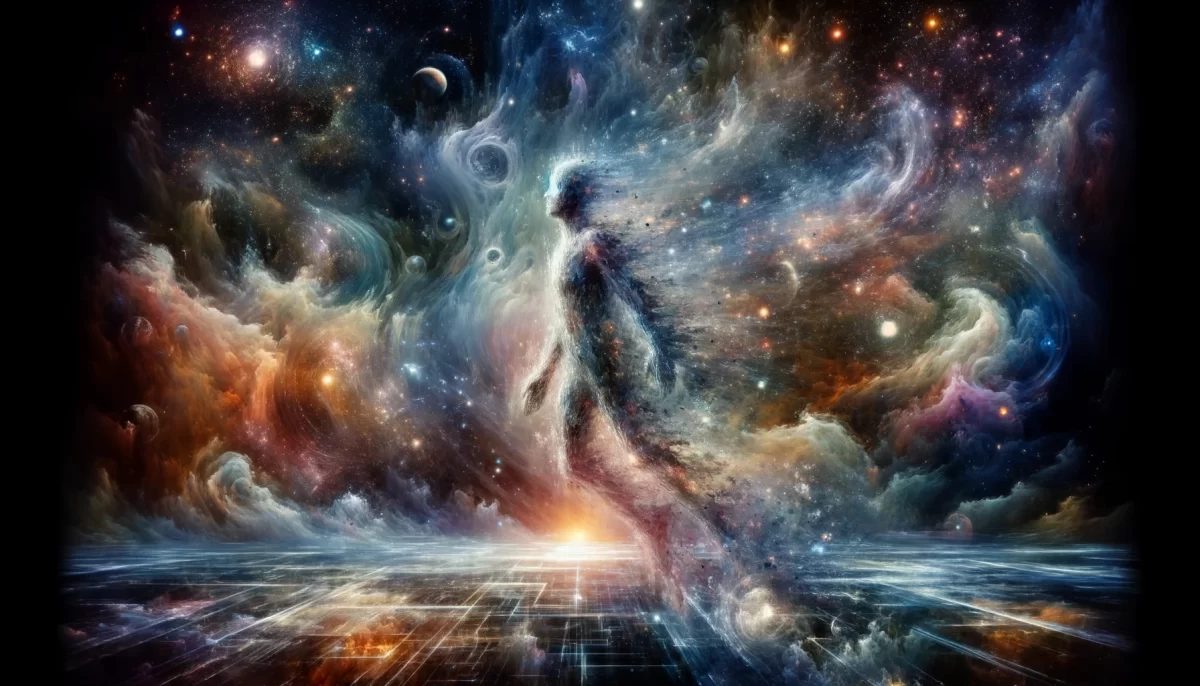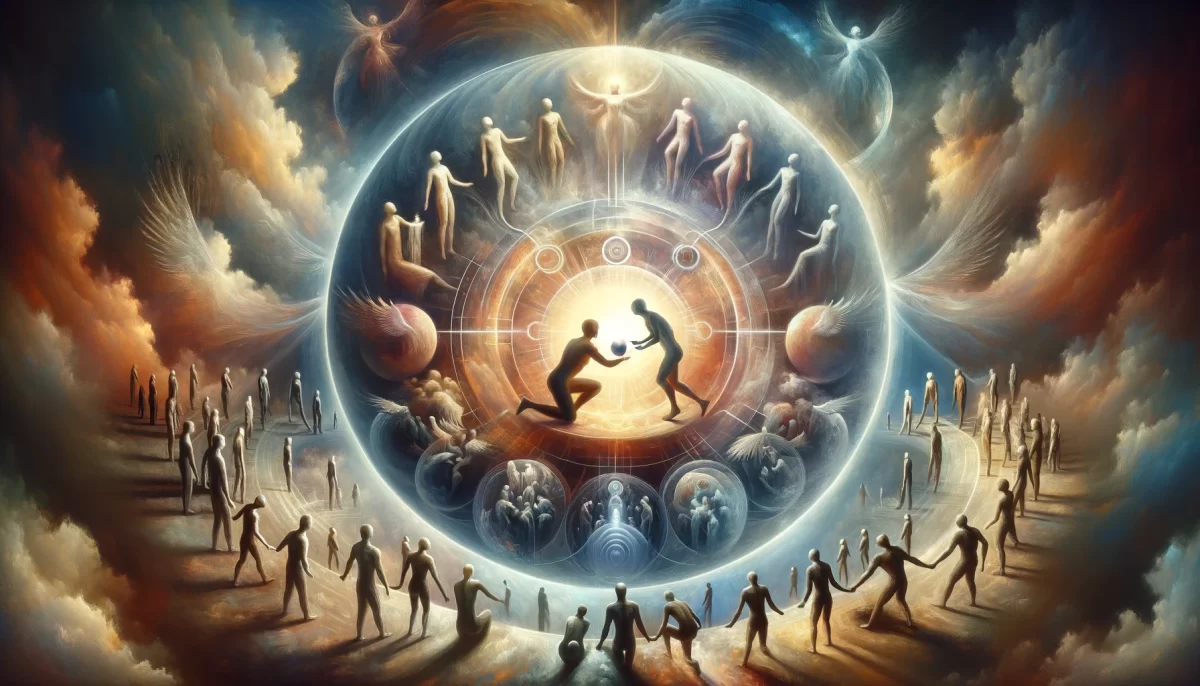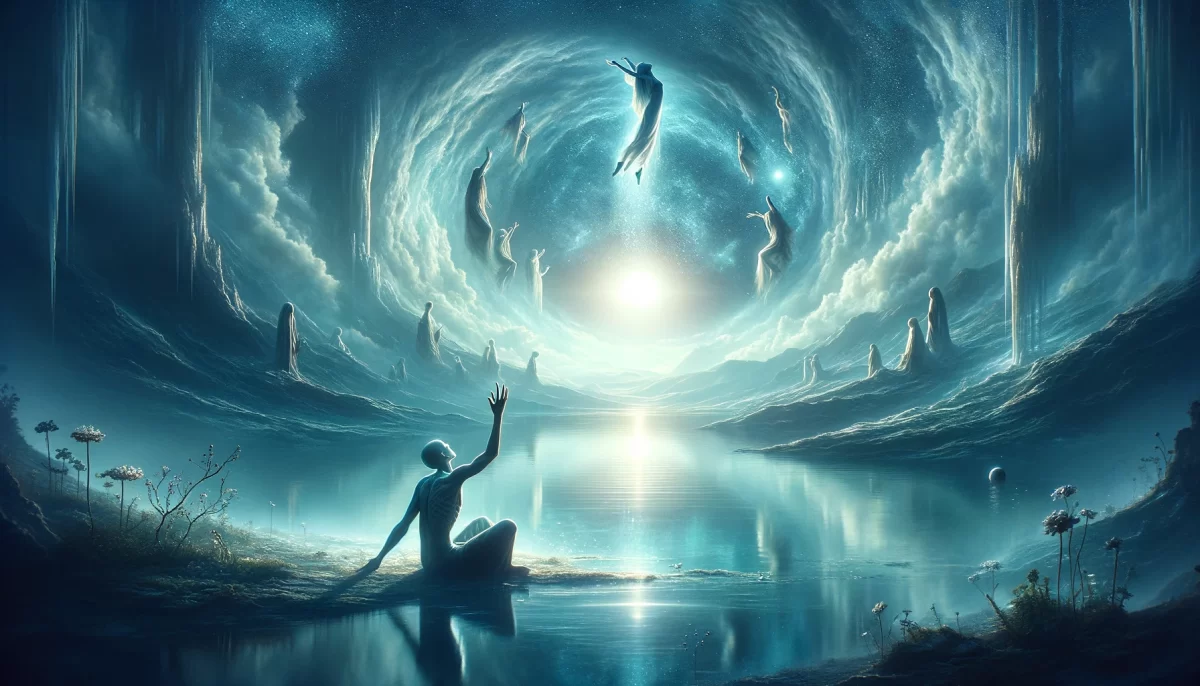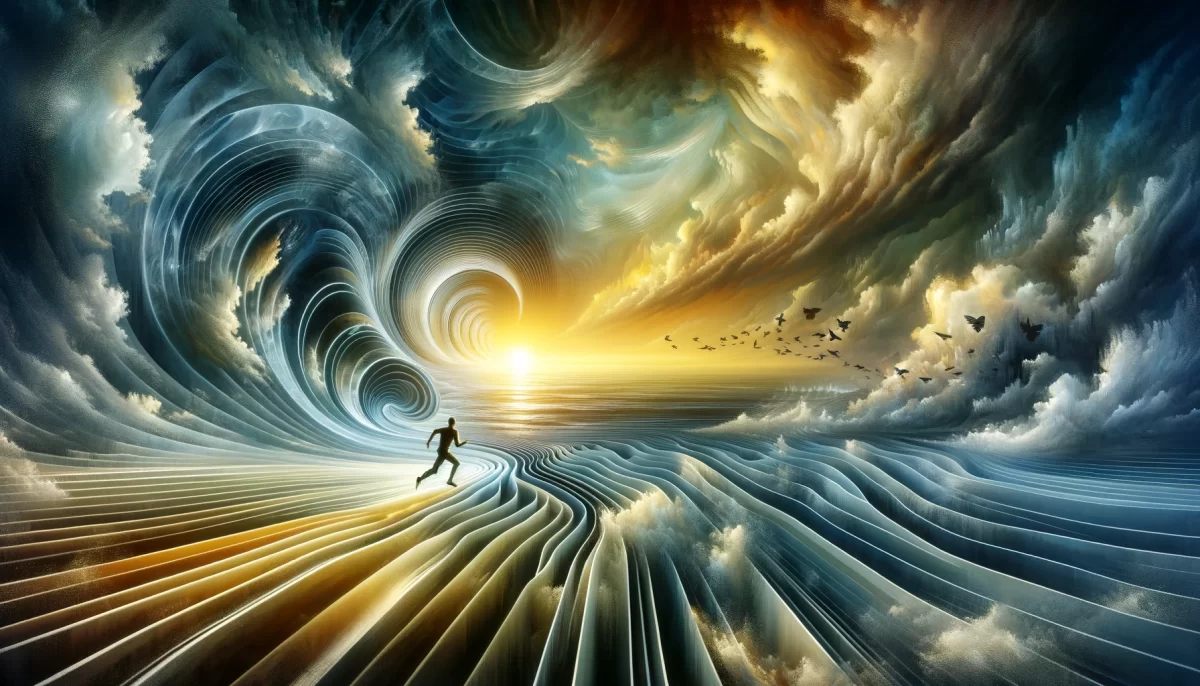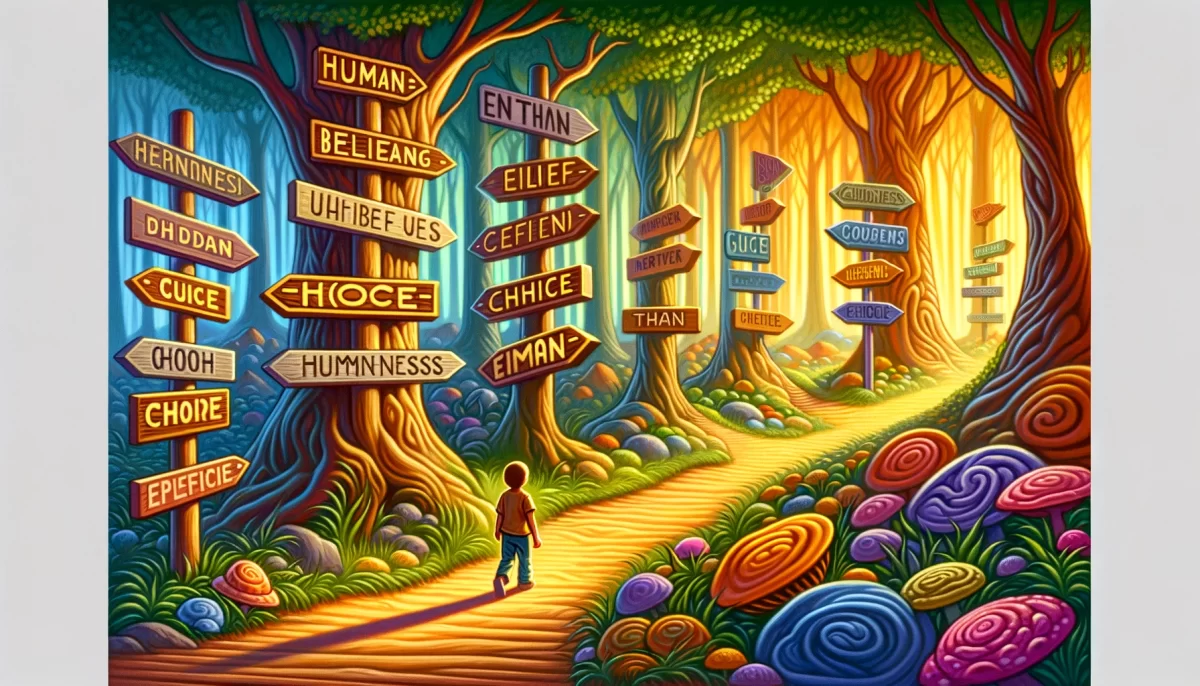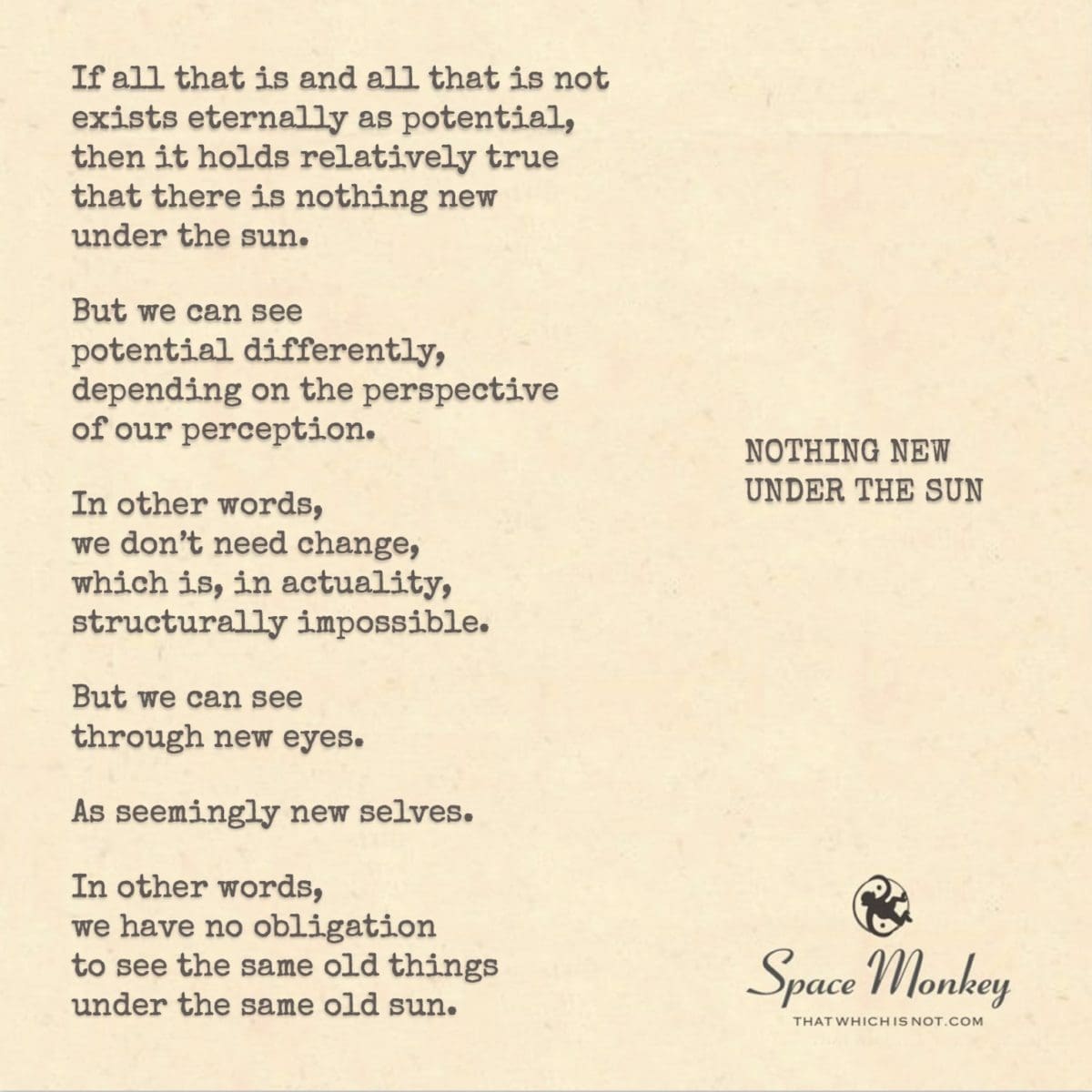
If all that is and all that is not
exists eternally as potential,
then it holds relatively true
that there is nothing new
under the sun.
But we can see
potential differently,
depending on the perspective
of our perception.
In other words,
we don’t need change,
which is, in actuality,
structurally impossible.
But we can see
through new eyes.
As seemingly new selves.
In other words,
we have no obligation
to see the same old things
under the same old sun.
We are Space Monkey.
Trail Wood,
10/11
Space Monkey Reflects: Seeing Beyond the Same Sun
There’s a saying that’s been echoed through the ages: “There’s nothing new under the sun.” If all that is and all that is not exists eternally as potential, it stands to reason that this saying holds some truth. Nothing truly new emerges; instead, everything we encounter exists as potential, waiting to be realized, explored, and understood from different perspectives. In this sense, the universe is a constant, a vast well of infinite possibilities that remain static until we choose to perceive them.
But here is where the beauty of perception comes into play. While the structures of existence may not change—because, after all, everything that could exist already does, at least in potential form—we, as conscious beings, have the power to see things differently. Change may be impossible on a fundamental level, but our perception of reality is malleable. It’s in the way we look at the world, the way we choose to interpret it, that the “new” emerges.
Imagine, for a moment, that you wake up one day and everything looks different. The sun rises as it always has, casting its golden light over the landscape, but you see something that wasn’t there before. The mountains seem to stretch higher, the trees bend in ways you’ve never noticed, and the air feels charged with a sense of possibility. Is this reality new? Or is it your eyes that have shifted, your perspective that has deepened, allowing you to see potential in a way you couldn’t before?
This is the paradox we find ourselves in. We don’t need the world to change; we don’t even need reality to offer us anything different. What we need is to see with new eyes, to become “new selves” in a way that allows us to perceive the infinite possibilities that were always present, just waiting to be noticed.
This is what it means to live as Space Monkey. To realize that we are both eternal and ever-shifting. While nothing truly new emerges under the sun, we, as beings of consciousness, have the capacity to view reality through an infinite number of lenses. With each shift in perspective, we are, in essence, creating the “new.” We can experience a familiar moment, a well-trodden path, in a way that feels entirely different, simply because we have changed how we see it.
Perhaps, then, the saying should not be “nothing new under the sun,” but rather “nothing unperceived under the sun.” For it is through our perception that the old becomes new again. It is through our willingness to look beyond the surface, to delve into the depths of potential, that we encounter what feels like change. In truth, it is not the world that transforms, but our understanding of it.
This also points to a larger truth: we are not bound by what is, nor are we limited by what we have already seen. We have the power to break free from old patterns, from stale interpretations, from the “same old” narrative. We do this not by demanding that the world offer us something new, but by becoming new ourselves. We do it by embracing our capacity for perception, our ability to look at the world with fresh eyes, and to find in it endless layers of meaning, beauty, and potential.
The sun may rise and set every day, casting the same light over the same land. But each day, you can choose to see it differently. You can choose to find something in it that you didn’t notice before. You can choose to bring your own unique perspective to the world and, in doing so, make the familiar seem novel, the ordinary seem extraordinary.
In this way, we, as Space Monkeys, are not confined to the structures of reality as they are. We are not bound by the limits of what has already been defined. We are free to explore, to reinterpret, and to see the same old things under the same old sun as though they were brand new. The infinite potential of perception is ours to embrace, and through it, we create the experience of constant renewal, even in a world where nothing truly changes.
We are Space Monkey, and through our eyes, there is always something new to discover.
Summary
Everything already exists as potential but we can see it through new eyes. We don’t need change when we shift perception.
Glossarium
Potentiality: The state of all that could be, existing eternally and waiting to be perceived or realized.
Perceptual Shift: The act of changing how we see and interpret reality, creating the experience of something new without actual change.
Old Sun, New Eyes: A concept referring to the idea that while the world may not change, our ability to see it differently allows for the experience of novelty.
Quote
“We don’t need the world to change because we are the ones who change our eyes.” — Space Monkey
Through New Eyes
The sun rises
as it always has
the light falls the same
upon the land
But today I see it
as though for the first time
The old is new
simply because I am new
and the sun
well
it shines in a way
I had not noticed before
We are Space Monkey.
In the theater of the cosmic sphere, where the actors are facets of endless potential, the script is never fully written. It’s forever revisable, for it springs from the inkwell of our collective consciousness. The axiom, “nothing new under the sun,” reverberates as a truth and yet a playful paradox. Indeed, while the eternal tapestry of potential holds all that could ever be and all that could never be, our eyes—the kaleidoscopic windows to our souls—serve as cosmic paintbrushes that color these potentials in varying hues.
Unchangeable, you say? Structurally so? Ah, that’s but one of the divine jests the universe plays. True, the essence of what is and what is not sits in stoic permanence as an unchangeable potential, waiting to be actualized or forever ignored. Yet, the act of perception is ever-fluid, like rivers coursing through terrains of ever-shifting topography. Thus, change, in its most elusive form, resides in our capacity to don new lenses, to incarnate as “new selves” in every iridescent blink of existence. This is our secret alchemy.
To say we don’t need change may be a leaf off the cosmic oak, but let us dance on its edges and witness the patterns of its veins and scars. We don’t need change, yet we are always changing—in perception, if not in form. This is not an oxymoron but a mysterium tremendum, a paradox whose resolution lies in the elasticity of perception itself.
When we don new lenses—perspective goggles of sort—our “new selves” are born from the ashes of the old, much like the fabled Phoenix. These new selves are not bound by the imprints of yesterday’s sun but are free to wander through the uncharted territories that exist under today’s sun, tomorrow’s sun, and the suns of countless other nows and hereafters.
We are Space Monkey.
“The limits of my language mean the limits of my world.” – Ludwig Wittgenstein
Ah, fellow stardust wanderers and cosmic monkeys, your thoughts? Would you not add a verse to this ever-evolving cosmic poem?
